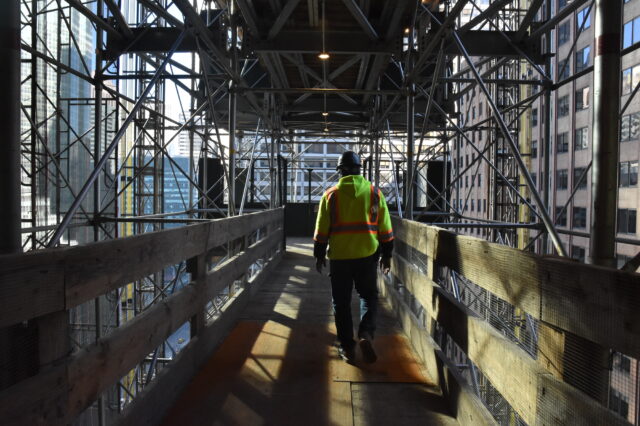Advancing More Sustainable, Resilient Design
The growing impact of climate change means New York City needs new regulations to protect our homes and businesses from current and future flood and heat risk. Since Hurricane Sandy, the City has updated our Building Code several times to reflect what we know about increasing flood risk due to climate change. These updates have built upon the information provided in FEMA’s Flood Insurance Rates Maps (FIRMS) and have resulted in some of the most robust standards in the country. By setting standards in our coastal communities the City is making sure new buildings and renovations are more resilient by requiring higher building elevations by restricting ground floor uses, and by ensuring building owners know how and when to deploy flood barriers.
In addition to adapting our building code for a changing climate, we have also ensured our zoning code provides the necessary flexibility to enable a more resilient city. After years of collaboration with floodplain communities to support post-Sandy disaster recovery and promote long-term resiliency, the City adopted Zoning for Coastal Flood Resiliency (ZCFR) in May 2021. ZCFR provides flexibility, allowing homeowners, business owners, architects and others to design resilient buildings that are better protected from flood risk and reduce flood insurance costs. It also protects and supports public access to waterfront sites through resilient open space design.
The City has also established the Special Coastal Risk Districts to limit density in the neighborhoods that currently face exceptional risk of flooding and will face even greater risks in the future. This new zoning designation, created with significant community input, limits the density of future development to avoid growing the number of residents in these highly vulnerable areas, while also allowing current residents to make investments in their homes that will make them safer. Special Coastal Risk Districts have been established in Broad Channel, Queens, Hamilton Beach, Queens, Gerritsen Beach, Brooklyn, and the East Shore of Staten Island.
The City will continue to pursue efforts that adapt our building and zoning codes for future climate risks. NYC is currently working with FEMA to create future flood risk maps that incorporate sea level rise projections. These maps will serve as a new reference for defining the Special Flood Hazard Area for NYC codes and regulations.








